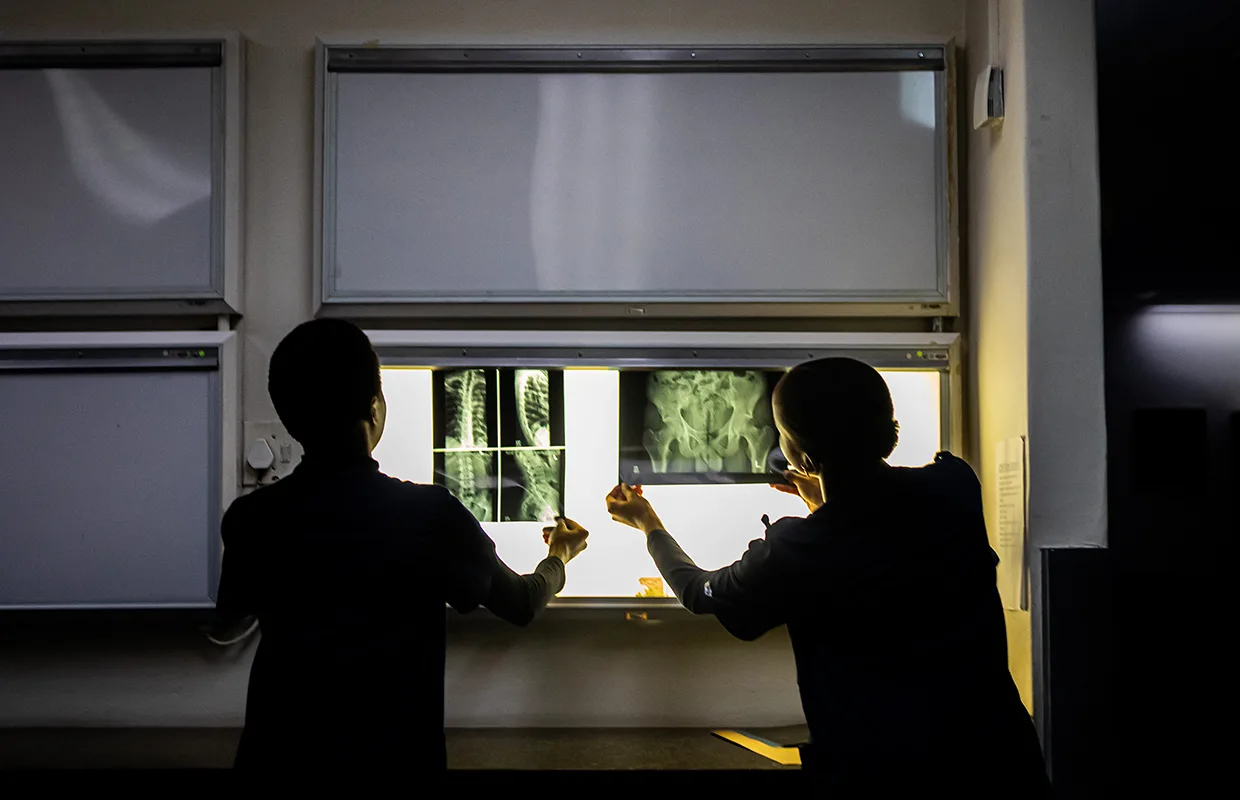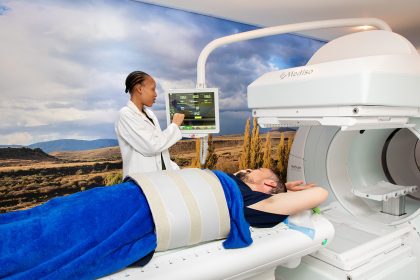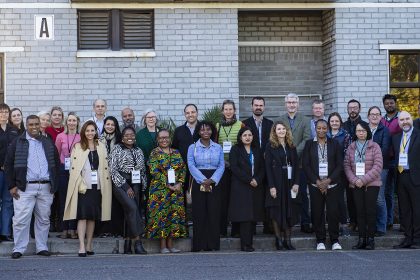One of South Africa’s most prestigious teaching hospitals, Charlotte Maxeke Johannesburg Academic Hospital is pioneering cutting-edge medical procedures across the Gauteng province. Gladys Bogoshi, CEO, tells us more about the facility’s revitalisation programme and its dedication to training the next generation of medical professionals.
A HUB OF CLINICAL EXCELLENCE
Access to equitable healthcare in South Africa (SA) has not always been a smooth process, tied up in geopolitical and socioeconomic challenges that have created significant barriers.
“Reflecting on the past 31 years since the inception of our democracy, I recognise that as a citizen and a health worker, my access to specific healthcare facilities was hindered by the colour of my skin,” opens Gladys Bogoshi, CEO of Charlotte Maxeke Johannesburg Academic Hospital (CMJAH), which is amongst the top 10 central hospitals in SA.
And yet, the country’s healthcare system has made noticeable improvements in recent years, granted by the construction of new health infrastructure, modernisation, and implementation of free healthcare for children under five years of age, pregnant women, and pensioners who have increased access to services closer to home.
“I commend the advancements made in ensuring all facilities are accessible to everyone, regardless of race, religion, or other distinguishing factors,” she adds.
Although certain historical challenges remain, SA is ready to embrace the positive changes garnered from the signing of the National Health Insurance Bill signed in May 2024, which promises to promote fair and accessible healthcare for all South Africans.
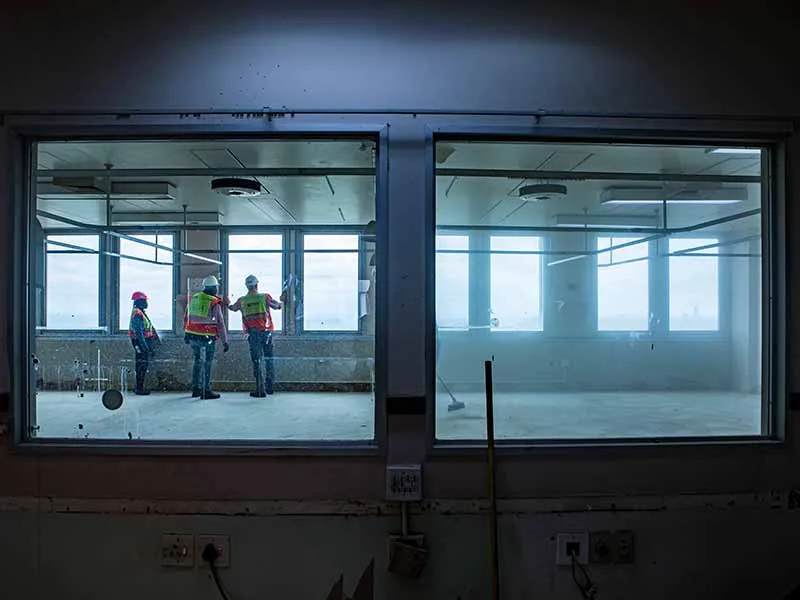
THE FOREFRONT OF SOUTH AFRICAN HEALTHCARE
One of SA’s leading medical facilities, CMJAH functions as the primary teaching hospital for the University of the Witwatersrand (Wits University) in Johannesburg, supporting both undergraduate and postgraduate education and collaborating with other domestic and international health training institutions.
The hospital additionally serves an estimated population of approximately six million residents within the Gauteng Province and receives referrals from various other areas, such as the Southern African Development Community (SADC).
Indeed, CMJAH acts as a referral hospital serving 14 other facilities across various categories and provides all tertiary and quaternary services. The institution is also proud to be the country’s sole provider of complex services at an exceptional standard, including liver transplants conducted in partnership with a private hospital.
CMJAH employs approximately 5,500 team members and operates with a budget of ZAR4.2 billion, possessing functional beds across 1,068 different disciplines.
“The staff and broader healthcare team demonstrate an unwavering commitment to serving the public, ensuring patients, families, and community members feel heard, respected, and genuinely valued,” Bogoshi prides.
This dedication is reflected in the hospital’s culture of inclusivity, where feedback is actively sought and translated into tangible improvements to service delivery.
“There is a palpable enthusiasm for innovation, driven by a shared vision of continuously enhancing quality of care, optimising processes, and increasing operational efficiencies,” she adds.
Indeed, CMJAH prides itself on being a hub of clinical excellence, home to numerous internationally recognised specialists whose expertise is acknowledged through research publications in leading peer-reviewed journals.
This strong academic foundation is complemented by a forward-looking approach that actively embraces cutting-edge health technologies – from advanced diagnostic tools to digital health solutions – ensuring patient care remains both evidence-based and at the forefront of global medical practice.
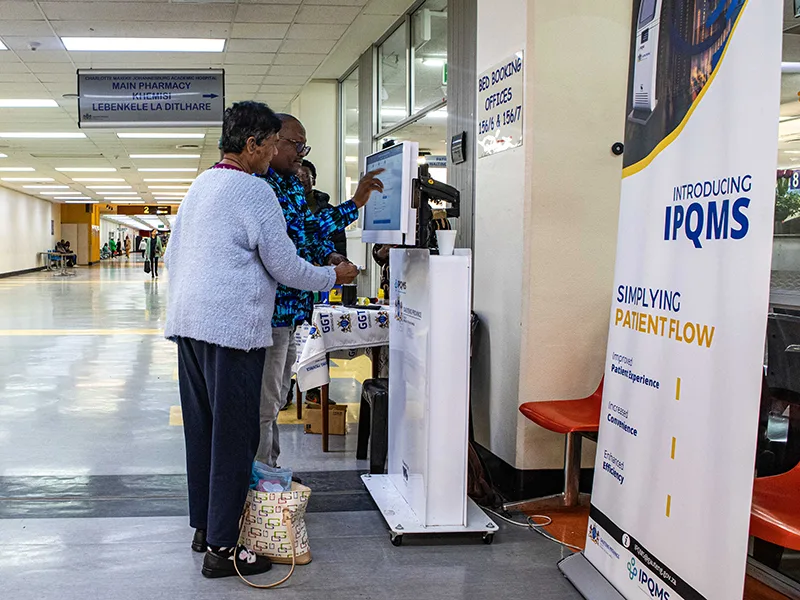
PIONEERING HEART PROCEDURES
CMJAH is further distinguished by its ability to pioneer world-class medical care, most pointedly demonstrated by the fact it was the first health facility in Gauteng Province to successfully introduce MitraClip implants to repair leaking heart valves.
“One of the procedure’s primary benefits is its significantly shorter recovery times, often just one or two days after the surgery, making it a game-changer for elderly or high-risk mitral regurgitation (MR) patients who are not suitable candidates for open-heart surgery,” Bogoshi highlights.
In patients who suffer from the condition, MR is the backward leakage of blood through the mitral valve occurring each time the left ventricle of the heart contracts.
“A leaking mitral valve allows blood to flow in two directions during contraction. Some blood flows from the left ventricle through the aortic valve, as it should, whilst some flows back into the left atrium, which it shouldn’t. This leakage can increase blood volume and pressure in the left atrium and raise pressure in the veins from the lungs to the heart, known as pulmonary veins,” she explains.
The MitraClip device is a small clip inserted through a catheter that helps the mitral valve close properly, restoring normal blood flow through the heart.
The revolutionary implant procedure was first performed by CMJAH in February this year on three state-funded patients, representing a significant advancement in minimally invasive heart valve therapy, which is now available to both public and private patients across Gauteng Province.
Going forwards, a decision was made to carry out these procedures in a controlled academic hospital setting. This considerably differentiates the surgery as it ensures all cases are documented in a national registry, enabling the monitoring of long-term outcomes and supporting structural heart disease treatment in SA.
Available through academic hospitals, the pioneering procedure is poised to transform the MR treatment landscape across the country.
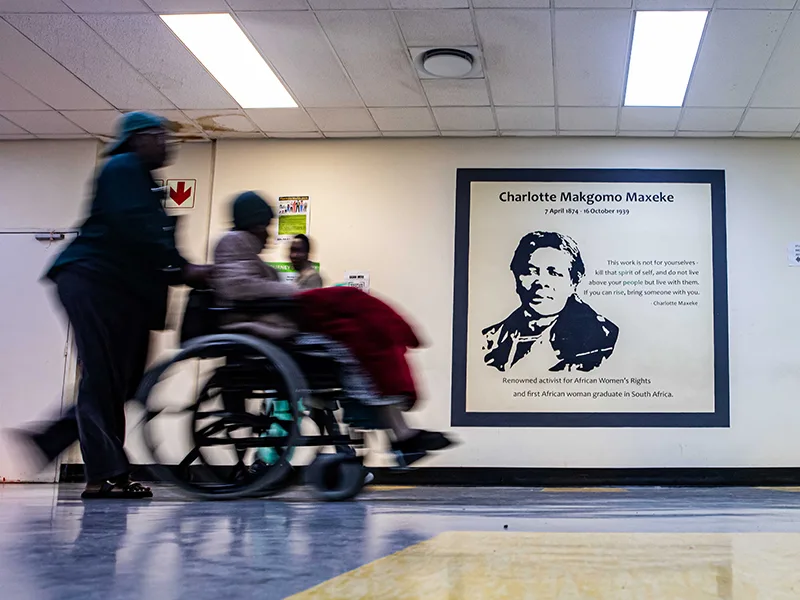
NEXT-GENERATION INVESTMENTS
CMJAH is currently going through a significant revitalisation programme aimed at upgrading its facilities and enhancing overall patient performance.
“In line with our commitment to excellence, the institution has launched an ambitious modernisation programme, investing heavily in advanced medical technology to improve diagnostic accuracy, treatment precision, and overall clinical outcomes,” Bogoshi states.
This includes the refurbishment of wards and outpatient department areas which were initially commissioned in 1978, ensuring that they are not only functional and efficient but also welcoming, comfortable, and conducive to healing.
Major progress has additionally been made through the installation and upgrading of state-of-the-art equipment, including magnetic resonance imaging (MRI) and computed tomography (CT) scanners, angiography suites, catheterisation labs, linear accelerators, brachytherapy devices, and mammography units.
These investments, totalling more than ZAR600 million over the past three years, demonstrate the institution’s commitment to staying at the forefront of healthcare innovation, providing patients with access to a high level of technology and expertise on par with that of leading global medical centres.
The hospital has also implemented WIB Group’s state-of-the-art Integrated Patient Queue Management System (IPQMS) at its paediatric pharmacy, meaning patients will no longer have to wait in long lines to receive their medication.
CMJAH is the second facility in the Gauteng province to implement the system, and since its initial roll-out in November 2024, IPQMS has already served 715 patients, demonstrating its potential to enhance service delivery.
The system streamlines the check-in process to ensure better efficiency, deliver accurate patient records, track service turnaround times, and aid effective staff scheduling by identifying busy periods.
Therefore, IPQMS solves South African public healthcare facilities’ most pressing challenges, including extended waiting times that hinder hospitals’ ability to respond efficiently to high demand.
“This innovative system is an important step towards modernising the public health system, improving patient experiences, and shortening wait times at facilities across the Gauteng Province.”
Another key milestone for the hospital is the restoration of a department that was severely damaged by a fire in April 2021. Repairs are already well underway, with the project scheduled for completion next year.
“This restoration will not only return the affected space to full functionality but also provide an opportunity to rebuild it to modern standards,” Bogoshi comments.

A HUB FOR RESEARCH AND INNOVATION
CMJAH has grown to become a dynamic centre for research, innovation, and academic collaboration.
One of the key teaching hospitals affiliated with Wits University, it occupies a unique position at the intersection of patient care, medical education, and scientific advancement.
“Research findings are not kept in academic silos – they feed directly into clinical practice. As an academic hospital, CMJAH ensures that medical students, nurses, and therapeutic service health professionals are exposed to a culture of inquiry.
“Many projects originate from postgraduate research, meaning that the next generation of healthcare workers is trained not only to deliver care but also question, evaluate, and improve it,” Bogoshi elaborates.
In essence, CMJAH’s research portfolio reflects a patient-centred, data-driven, and socially responsible approach. Its work bridges high-level academic inquiry and on-the-ground clinical application, ensuring innovation is not an abstract concept but a daily practice that saves lives.
The facility has a vibrant multidisciplinary research committee that hosts an annual research symposium and has also seen an increase in the number of PhDs undertaken.
Hospitals across the Gauteng Province have more broadly demonstrated their commitment to excellence in healthcare delivery by dominating the Public Sector Innovator of the Year category at the National Batho Pele and Innovation Awards (NBP&IA) held in November 2024.
In a remarkable achievement, all top three positions in the category were secured by facilities from the Gauteng Department of Health.
CMJAH claimed second place with its Physiotherapy Peer Review project, which aims to improve the efficiency of physiotherapy services and has introduced standard operating procedures and enhanced communication across facilities.
INFORMING THE PUBLIC
CMJAH’s dedicated staff members actively participate in outreach programmes, working closely with the hospital and collaborating with primary healthcare providers to promote health education and awareness within the community.
These initiatives not only strengthen links between the hospital and surrounding clinics but also empower community members with the knowledge to make informed health decisions.
CMJAH also leverages both formal and social media platforms to address pressing health-related issues, share credible medical information, and engage with the public on prevention, treatment, and wellness procedures.
“Strategic collaborations, such as our partnership with Cricket South Africa to raise awareness about breast cancer, amplify our health promotion efforts by combining medical expertise with high-profile advocacy,” Bogoshi insights.
Additionally, the hospital celebrates key events in the national and global health calendar, using these occasions to increase public engagement, raise awareness of important topics, and encourage proactive healthcare behaviours.
CMJAH also invests in inspiring the next generation of healthcare professionals; through the institution’s open days, learners are invited to explore various careers in the healthcare sector, gain exposure to the hospital environment, and participate in job-shadowing opportunities.
“These initiatives not only foster career interest but also help cultivate a deeper understanding of the vital role healthcare workers play in society,” she closes.
Looking to the coming year, CMJAH is continuing its hospital restoration efforts, rehabilitating areas affected by prior structural damage. This includes upgrades to wards, outpatient areas, and specialised clinical spaces, ensuring they meet current healthcare standards and patient needs.
Editor’s note: Many of the business leaders featured by Africa Outlook continue sharing their insights on LinkedIn. For executives across Africa seeking to strengthen their online presence, visit LinkedIn profile optimization.



